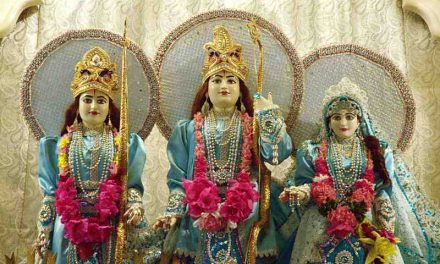The Savitri Upanishad is one of the minor Upanishads of Hinduism, which are ancient texts that expound the essence of the Vedas, the sacred scriptures of Hinduism. The Savitri Upanishad is attached to the Samaveda, which is the Veda of melodies and chants. The name Savitri comes from the Sanskrit word savitr, which means “ray of light” or “sunlight”.
The Savitri Upanishad is one of the most important and influential Upanishads in the Hindu tradition. It is a long and complex text, but it is also a deeply rewarding one. The Upanishad explores a number of philosophical concepts, including the nature of reality, the soul, and the relationship between God and the human being. It is a text that can help us to understand ourselves and our place in the universe.
One of the central themes of the Savitri Upanishad is the power of love. Savitri, the heroine of the story, is able to defeat death itself through the power of her love for her husband, Satyavan. This love is not just a personal emotion, but a cosmic force that can transform the world.
The Upanishad also teaches us about the nature of reality. It tells us that the universe is not a collection of separate objects, but a single, unified whole. This whole is called Brahman, and it is the source of all being. The human soul is also a part of Brahman, and our goal in life is to realize our true nature as divine beings.
The Savitri Upanishad offers us a path to liberation from the cycle of birth and death. This path is called yoga, and it involves a combination of meditation, self-discipline, and devotion. Through yoga, we can still the mind and unite with the divine.
The Savitri Upanishad is a rich and complex text that offers us a wealth of wisdom and insights. It is a text that can help us to understand ourselves and our place in the universe. It is a text that can inspire us to live a life of love, compassion, and service.
Here are some of the key philosophical concepts that are explored in the Savitri Upanishad:
- The nature of reality: The Upanishad teaches that the universe is not a collection of separate objects, but a single, unified whole. This whole is called Brahman, and it is the source of all being. The human soul is also a part of Brahman, and our goal in life is to realize our true nature as divine beings.
- The soul: The Upanishad teaches that the soul is immortal and eternal. It is not bound by the body or the mind, and it cannot be destroyed by death. The soul is a spark of the divine, and it is our goal to reunite with the divine in liberation.
- The relationship between God and the human being: The Upanishad teaches that God is both immanent and transcendent. God is present in all things, but God is also beyond all things. The human being is a bridge between the finite and the infinite. We are capable of realizing God through our love, our devotion, and our actions.
- The path to liberation: The Upanishad teaches that the path to liberation is called yoga. Yoga is a combination of meditation, self-discipline, and devotion. Through yoga, we can still the mind and unite with the divine.
The Savitri Upanishad is a timeless text that speaks to the human condition. Its message of love, sacrifice, and redemption is as relevant today as it ever was. It is a text that can help us to understand ourselves and our place in the universe. It is a text that can inspire us to live a life of love, compassion, and service.
If you are interested in learning more about the Savitri Upanishad, there are many resources available to you. There are many translations of the Upanishad available, and there are also many books and articles that discuss its philosophy. You can also find online resources that can help you to learn more about the Upanishad.
The Upanishad then explains the meaning of the Gayatri Mantra, one of the most sacred and powerful hymns in Hinduism. The Gayatri Mantra is a prayer to Savitr, the sun god, who is also identified with Brahman, the supreme reality. The mantra invokes Savitr to illuminate one’s intellect and guide one to the highest truth. The mantra consists of three parts: the invocation (om bhur bhuvah svah), the praise (tat savitur varenyam), and the request (bhargo devasya dhimahi dhiyo yo nah prachodayat).
The Upanishad also teaches the practice of Savitri-vidya, or the knowledge of sunlight, which is a form of meditation on Savitr as the source of life, light, and enlightenment. The text describes two methods of meditation: one based on breath control (pranayama) and one based on sound (mantra). The breath-based meditation involves inhaling through the right nostril while reciting “om savitre namah” (salutations to Savitr) and exhaling through the left nostril while reciting “om savitryai namah” (salutations to Savitri).
The sound-based meditation involves chanting two mantras called Bala (Strength) and Atibala (Super Strength), which are derived from the Gayatri Mantra. The Bala mantra is “om bhur bhuvah svah tat savitur varenyam”, and the Atibala mantra is “om bhur bhuvah svah tat savitur varenyam bhargo devasya dhimahi dhiyo yo nah prachodayat”.
The philosophy of Savitri Upanishad is thus a blend of dualism and nondualism, as it acknowledges the diversity and polarity of creation, but also affirms the unity and identity of all existence in Brahman. The Upanishad celebrates the power and beauty of Savitr and Savitri, as well as their role in sustaining and transforming the world. The Upanishad also invites one to seek their grace and guidance through prayer and meditation, and ultimately realize one’s true nature as Brahman.
1: Savitri Upanishad – Wikipedia 2: Savitri Upanishad – Vyasa Mahabharata : Savitri Upanishad – Exotic India : Savitri Upanisad – Sanskrit Documents





